Domestic smoking rate hit a record low of 16.7%

On October 27, 2020, the Ministry of Health, Labor and Welfare announced the results of a survey showing that the smoking rate in Japan in 2019 was 16.7% for both men and women, the lowest ever. The Ministry of Health, Labor and Welfare points out that smoking rates have 'significantly decreased in both men and women over the last decade.'
Results of 'National Health and Nutrition Survey' in the first year of Reiwa
Smoking rate 16.7% for both men and women The lowest since the survey started | NHK News
https://www3.nhk.or.jp/news/html/20201028/k10012683831000.html
Smoking --Our World in Data
https://ourworldindata.org/smoking
The fact that the smoking rate of Japanese people has decreased significantly was found by the ' National Health and Nutrition Survey ' conducted by the Ministry of Health, Labor and Welfare in November 2019. In this survey, we conducted a questionnaire on lifestyle-related habits such as eating habits, drinking, and smoking for 2,670 men and 3039 women aged 20 and over, excluding foreigners and live-in workers living all over the country.
The result is below. Smoking rates in 2019 were 27.1% for men, 7.6% for women and 16.7% for both men and women, the lowest since 2009.
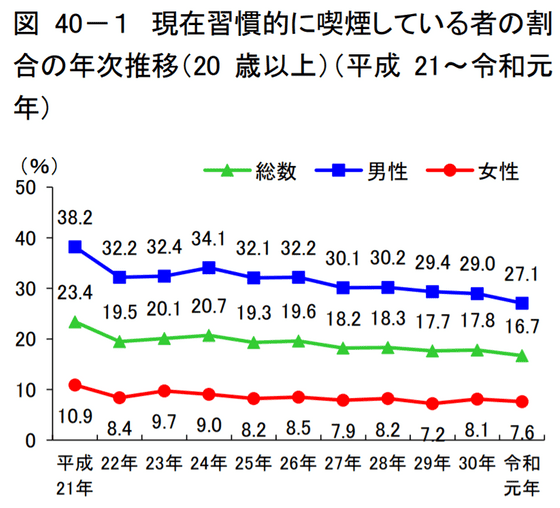
The smoking rates are shown below by gender and age. The Ministry of Health, Labor and Welfare pointed out in the report of the survey results that 'the smoking rate is high among men in their 30s and 60s, exceeding 30%.'
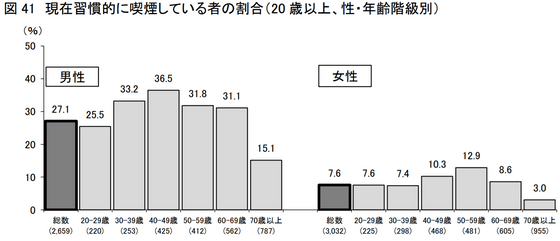
Below is a graph showing the types of cigarettes used by smokers by gender and age. 79% of men and 77.8% of women use cigarettes. In addition, the percentage of people who use '
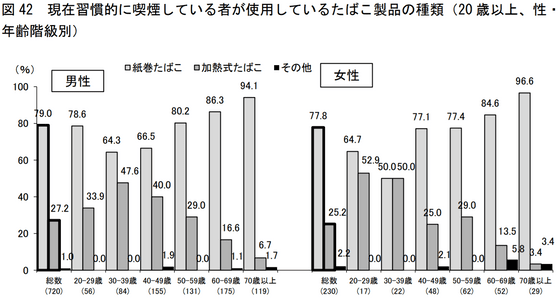
In addition, the Ministry of Health, Labor and Welfare has set a goal of reducing the smoking rate for both men and women to 12% by 2022, and has formulated and published a '
Declining smoking rates are a trend seen not only in Japan but worldwide. The following is a color-coded map of the 'World Smoking Rate in 2000' published by Our World in Data, a research organization that collects data on global issues. The target age is 15 years old and over, which is a little different from Japan, but there are many countries such as Russia, Chile and Argentina in South America, which are colored in deep red to indicate that smoking prevalence is over 40%.
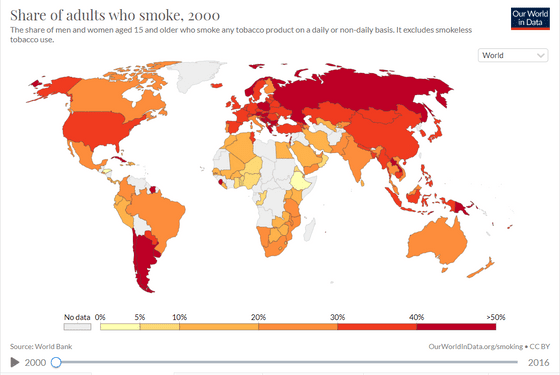
As of 2000, the country with the highest smoking rate was the Republic of Kiribati in the central Pacific Ocean, with a smoking rate of 73.4%.
This is the latest data at the time of writing the article. In 2016, the smoking rate in countries such as Russia and Chile, where the smoking rate exceeded 40% in 2000, fell below 40% across the board.
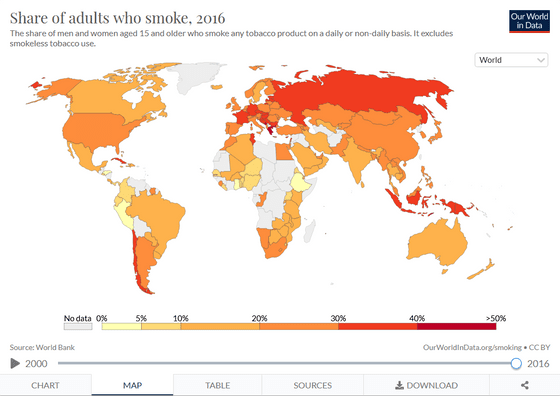
The Republic of Kiribati still has the highest smoking rate in the world, but the smoking rate is still 47%, which is a considerable decrease from the one-time period.
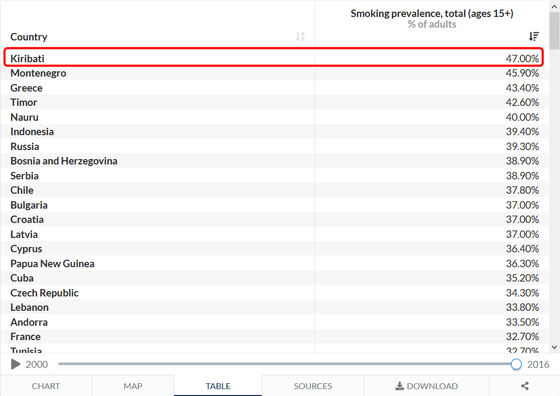
Related Posts:
in Note, Posted by log1l_ks







